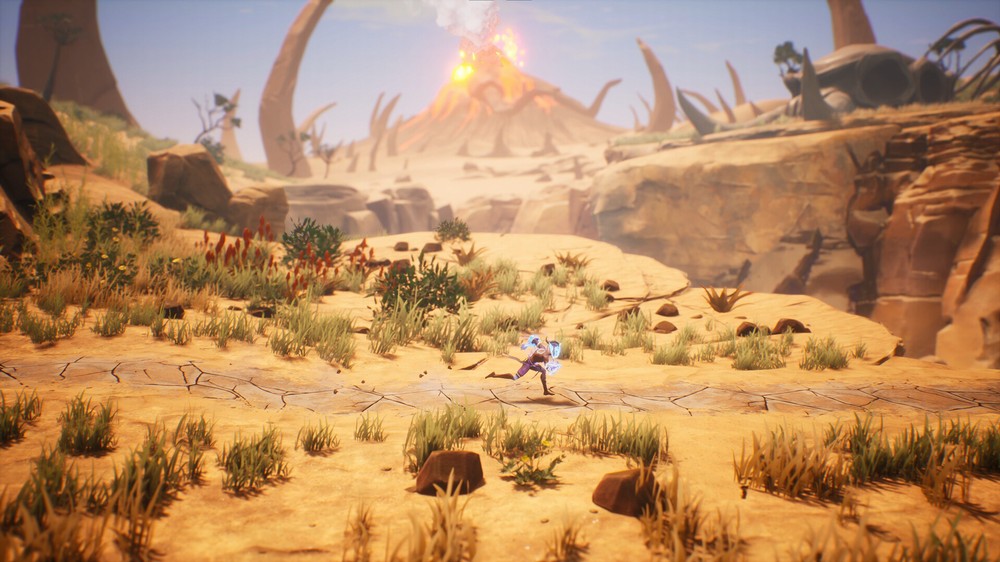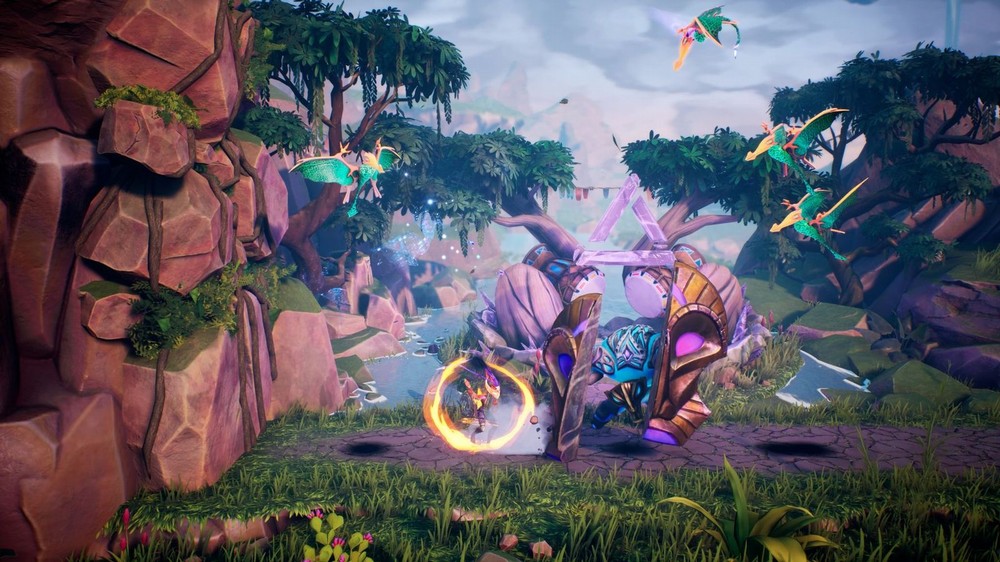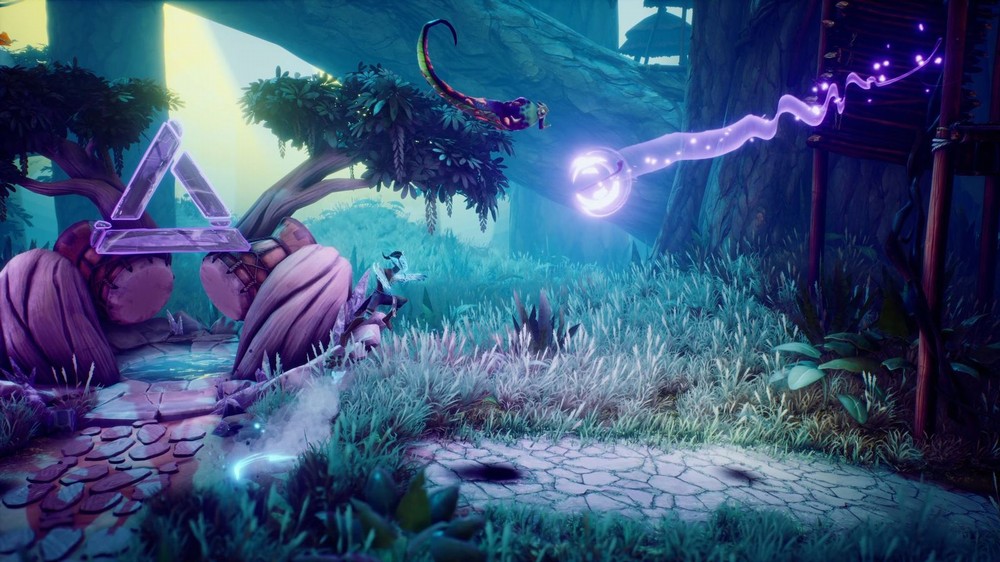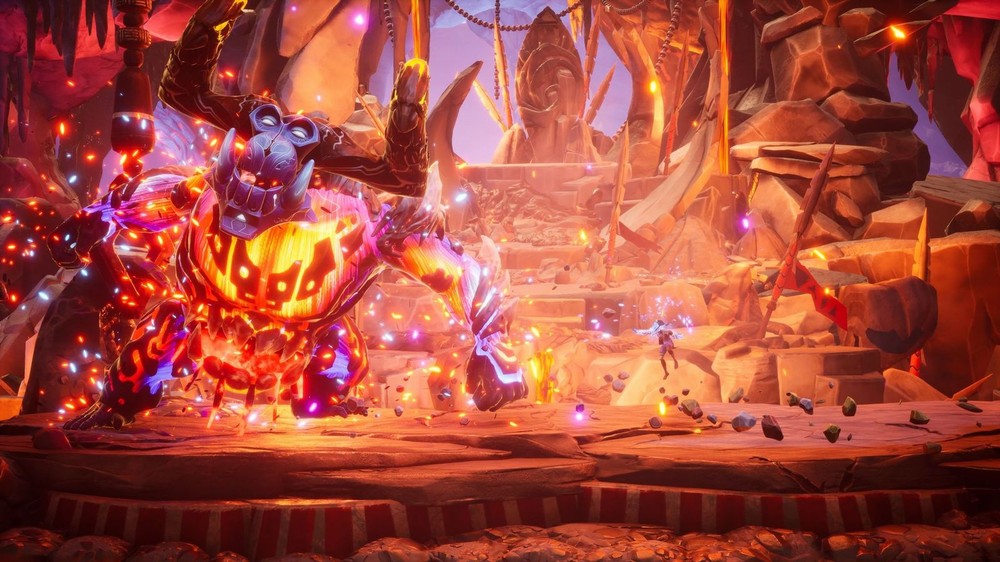When Tales of Kenzera: Zau was first showcased at the Game Awards in 2023, I was intrigued by the colorful futuristic design and soundtrack. Moreover, when I learned about the game’s premise coming from the lived experience of actor Abubakar Salim mourning the loss of his father, it painted a clear picture of the goals and scope of the project. You play as an African shaman named Zau who seeks to recover the spirit of his father after his passing. He must travel through four acts, and defeat three demigods to fulfill this mission. The art design, voice acting, and soundtrack do a lot to carry this game, however, is it enough to demand your hard-earned dollars and time?
Published as an EA|Original, no doubt the behemoth publisher saw a clear market for another Metroidvania Platformer after the critical success of the reimagined Prince of Persia: The Lost Crown. Looking to stand out, it’s clear that Surgent Studios borrowed from their background in film to develop ZAU. While technically proficient in game mechanics, the standout elements are the voice acting, soundtrack, and art design.
Bookending the story, you are a young man who is grieving the passing of his father. To help you cope, your late father has written you a story of a young shaman named Zau who must sojourn through the underworld to recover his father’s spirit and symbolically mourn his loss. Pulling themes directly from the real-life actor, Abubakar Salim. It’s a compelling pitch and a deeply personal and vulnerable topic to use the creation of a videogame to process real-life tragedy.
Once you enter the land of Kenzera, Zau is greeted by the God of Death, Kalunga. He agrees to accompany you on your journey and in short order you’re equipped with the Sun and Moon masks. These masks act as your primary way to solve puzzles, interact with your environment, and defeat enemies. While the Sun mask is for close combat and melee attacks, the Moon mask equips Zau with ranged and projectile attacks. Each has a super that can be triggered should you charge up the appropriate meter.
While the early enemies can be dispatched with either mask, eventually you’ll need to swap between the Sun and Moon to clear an orange or blue shield and damage your foes. Early on the enemy variety felt simplistic but satisfying, however after a handful of hours I was hoping for a bit more variety in enemy attacks or types. Furthermore, the flying enemy was particularly frustrating as they didn’t seem to attack very often and since they were at a distance, I could only use my Moon mask to damage them at times. It felt like a pacing hiccup when the game would lock you into a combat zone.
Speaking of pacing, all Metroidvania games require a large dose of patience and backtracking. I found myself rolling my eyes when I saw where my next objective was. The game design tries to mitigate this by providing fast travel points throughout the levels, but I never found them convenient enough to use. I was always just a little too far away from a fast travel point or a little too close to my objective and ended up just slogging through routes to my destination.
On your way to each major objective, you’ll be frequently stopped by a battle-zone that will lock you in, until you dispatch the enemies. These were sprinkled in a little too generously and interrupted the momentum of acquiring a new power or being close to reaching your destination. It’s the sort of dynamic that was novel in the first quarter of the game but felt frustrating after two or three hours. The game feels great as a platformer, as you dodge low walls and double jump. When these battle zones interrupted your flow too often it felt more distracting than rewarding.
Along the way, you’ll meet a handful of fanciful characters who are all voiced and acted well. The direction and background of each character is thoughtfully crafted and delivered. Coupling this with the orchestral and tribal blend of the soundtrack, including a lovely choir at times, and the story beats solidify well and make completing each of the four acts rewarding.
Apart from the pacing, my last major gripe is some of the running sequences particularly a handful of obtuse platforming puzzles. By no means is the game designed to grind you into oblivion like a Super Meat Boy or Celeste, but I found a handful of challenges overly frustrating. Without spoiling anything, midway through the game, you’ll be challenged by a smoke monster that has you platforming and running to avoid being caught. I found the visual cues simply weren’t strong enough and after an hour or so of literally hitting my character’s head against a wall, it felt like an under-polished part of the game rather than a rewarding challenge. There were also a handful of times when I couldn’t tell if the game wanted me to keep trying to platform up to a difficult ledge or look for another route. Some visual or audio ping would have saved me hours.
While the game doesn’t quite check all the boxes, it is still a beautiful experience with an outstanding soundtrack. While I had my frustrations, I don’t think they outweighed my overall positive experience. I enjoyed the characters, setting, and music. The game could have used a bit more polish in a few parts and would have benefited from a few more mock reviews before being put into the wild. That being said, when the game design, art, and sound all hit at the same time, you can see the vision and heart behind the project.
If you love the Afro-Futurism and the colorful world of Tales of Kenzera: ZAU, there’s plenty for you to see. Overall, I enjoyed my time, but I wouldn’t say it’s redefining the genre, and to be fair, I don’t think that’s what the goal of the project was. I hope ZAU can find an audience that allows Surgent to take another stab at it and further explore the world of Kenzera. If you’re ready to traverse the underworld. Tales of Kenzera: ZAU is currently on sale for $17.99 on Steam.
















